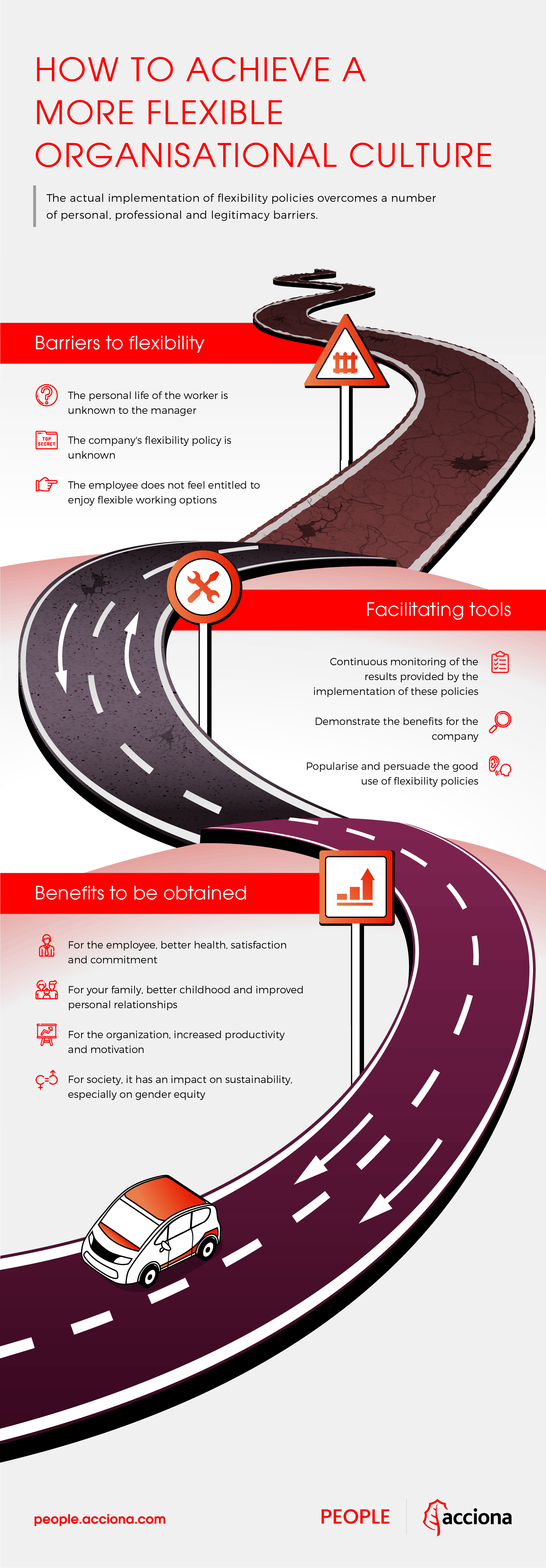In turn, these members, with their own behaviours, attitudes, language, dress and values, also shape the prevailing culture. Therefore, while it is true that no culture changes overnight, it is never rigid. Culture is fluctuating, open to change. This is why the culture of a territory, the culture of a family, and the culture of a specific organisation change over time.
Organizational culture and work-life balance
In order to continue reflecting on the role of people in organisations, it is important to understand work-family culture. Like all subcultures, it defines organisational culture, and is defined by it in turn.
In this case, the work-family culture was defined, already in the 1990s, as those assumptions, beliefs and shared values regarding the extent to which an organisation supports and values the integration of the work and family life of its employees.[1].
The same authors who coined the term, far from leaving it again in a vague and unattainable concept, describe in detail three components that form the work-family culture. Analysing these three following components can help companies to understand their organisational culture and subcultures in depth.
Organizational culture: the best worker is the one who works the longest
The legislation sets a limit on hours for full-time contracts. But despite what the law says, employees in certain companies are aware of the amount of time they are expected to work. Promising young people working in auditing firms, consulting firms or investment banks are well aware of this. It is also known by the employee in a small company, and the finance director in a medium-sized company.
No one directly demands that they work extra hours, but they emulate the behaviour of their colleagues and incorporate this feature of the organizational culture into their work routine. This idea is related to the need of rethinking the concept of the ideal worker discussed in a previous article.

